Orb-weaves Spider
- February 28, 2024
- 0 comment
Orb-weaver spiders are a diverse and fascinating group of arachnids known for their intricate web-building abilities and predatory behaviors. Found in various habitats around the world, these spiders belong to the family Araneidae and encompass a wide range of species, each with its own unique characteristics. One of the most distinctive features of Orb-weavers is their ability to spin orb-shaped webs composed of sticky silk, which they use to capture prey such as insects and other small arthropods. These webs are masterpieces of engineering, carefully constructed to maximize prey capture efficiency.
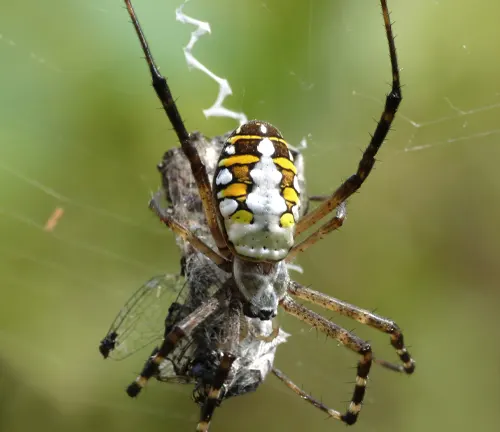
Orb-weaver spiders exhibit remarkable diversity in size, coloration, and behavior, with some species being tiny and inconspicuous while others are large and vibrant. Despite their formidable appearance, Orb-weavers are generally harmless to humans, with their venom typically not posing a threat. In fact, these spiders play a crucial role in ecosystems as natural pest controllers, helping regulate insect populations and contributing to ecological balance. While Orb-weaver spiders may evoke fear or fascination in humans, they are an integral part of the natural world, showcasing the beauty and complexity of arachnid life.
| Specification | Description |
|---|---|
| Family | Araneidae |
| Habitat | Various habitats worldwide, including forests, grasslands, and gardens |
| Web Type | Orb-shaped, composed of sticky silk |
| Prey | Insects and other small arthropods |
| Venom | Typically not harmful to humans, used to subdue prey |
| Size | Varied, ranging from tiny to several inches in diameter |
| Coloration | Diverse, ranging from muted tones to vibrant hues |
| Behavior | Generally non-aggressive, may exhibit defensive behaviors when threatened |
| Lifespan | Typically one to two years |
| Role in Ecosystem | Predators of insects, contributing to ecological balance |
| Importance | Natural pest controllers, aiding in insect population regulation |
| Conservation Status | Varied, with some species facing threats due to habitat loss and climate change |
| Interesting Fact | Some species recycle their webs, consuming and rebuilding them regularly |
Master Architects of the Arachnid World
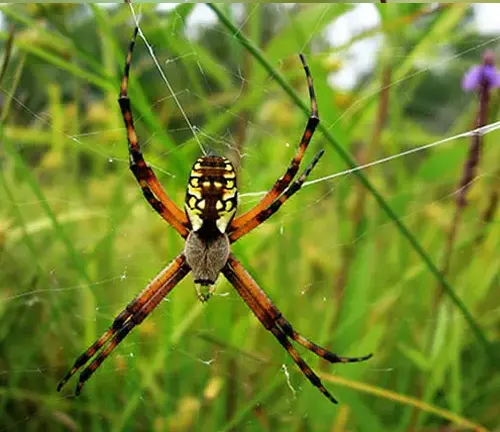
Orb-weavers spiders, with their intricate webs and fascinating behaviors, are among the most iconic arachnids in the world. From their physical characteristics to their role in ecosystems, these spiders captivate both scientists and enthusiasts alike.
Orb-weavers spiders belong to the Araneidae family, characterized by their ability to spin intricate orb-shaped webs. These spiders are found in various habitats worldwide, showcasing remarkable diversity in size, coloration, and behavior.
Physical Characteristics

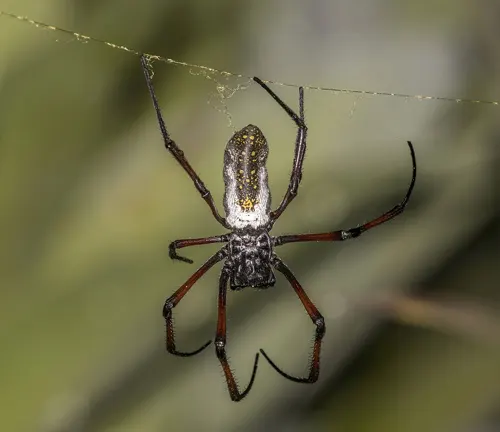
Orb-weavers spiders exhibit a range of physical characteristics that make them easily recognizable. These arachnids typically have round abdomens, which may vary in size depending on the species and individual. Their abdomens often feature intricate patterns or markings, contributing to their overall appearance.
One of the most distinctive features of Orb-weavers spiders is their eight legs, which are long, slender, and jointed. These legs enable them to move with agility and precision, essential for navigating their complex web structures and capturing prey.
The cephalothorax, or the fused head and thorax region, houses the spider’s vital organs, including its brain, eyes, and mouthparts. Orb-weavers spiders possess eight eyes arranged in two rows, with variations in size and arrangement depending on the species. While these spiders have well-developed vision, they rely heavily on vibrations transmitted through their webs to detect prey and potential threats.
Many Orb-weavers spiders display striking coloration, ranging from vibrant hues to muted tones, often serving as camouflage or warning signals. Some species feature intricate patterns or markings on their bodies, further enhancing their camouflage or deterring predators.
Habitat and Distribution
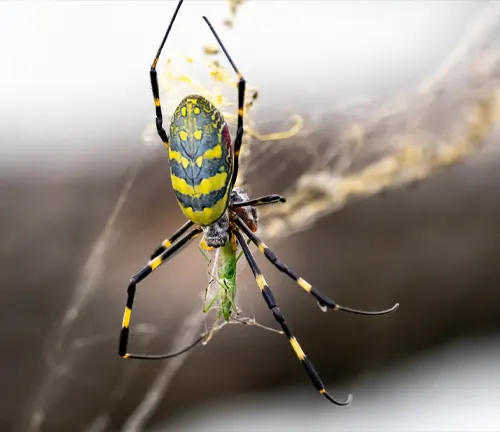

Orb-weavers spiders are found in a wide range of habitats across the globe, showcasing their adaptability to diverse environmental conditions. These spiders inhabit various ecosystems, including forests, grasslands, wetlands, deserts, and urban areas. Their ability to thrive in different environments reflects their resilience and versatility as a species.
The distribution of Orb-weavers spiders spans every continent except Antarctica, indicating their widespread presence across the world. While some species are more commonly found in specific regions, others have broader ranges that encompass multiple continents.
In temperate regions, Orb-weavers spiders can be found throughout the year, with populations fluctuating in response to seasonal changes. During warmer months, their activity increases as they hunt for prey and engage in reproductive behaviors. In colder climates, some species enter a state of dormancy or seek shelter to survive harsh conditions.
Tropical regions host a rich diversity of Orb-weavers spiders, with numerous species thriving in warm and humid environments. Here, these spiders play integral roles in tropical ecosystems, controlling insect populations and contributing to the overall balance of biodiversity.
Within their habitats, Orb-weavers spiders occupy diverse microhabitats, utilizing vegetation, soil, rocks, and human-made structures for shelter and web construction. Their ability to adapt to different substrates and environmental conditions allows them to exploit a wide range of resources for survival.
Diet and Feeding Habits
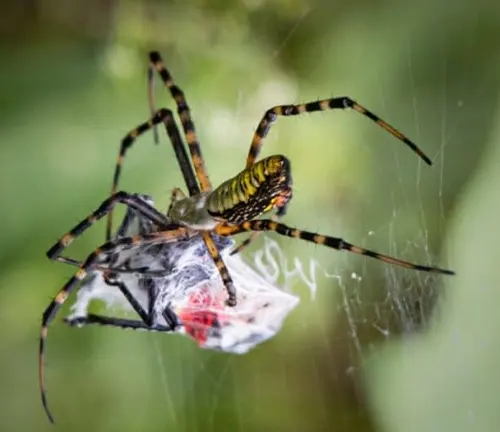

Orb-weavers spiders are skilled hunters that primarily feed on a diet consisting of insects and other small arthropods. Their feeding habits are closely intertwined with their ability to spin intricate webs, which serve as effective traps for capturing prey.
Once an Orb-weavers spider constructs its web, it patiently waits for vibrations or disturbances that signal the presence of potential prey. When an unsuspecting insect becomes ensnared in the sticky silk strands, the spider quickly detects the movement and rushes to investigate.
Upon reaching its trapped prey, the Orb-weavers spider immobilizes it with silk threads, swiftly wrapping the struggling insect to prevent escape. The spider then administers a venomous bite, injecting digestive enzymes into the prey’s body. These enzymes break down the internal tissues of the prey, effectively liquefying its insides and allowing the spider to consume the nutrient-rich liquid.
After feeding, the Orb-weavers spider may discard the remaining exoskeleton or wrap it in silk for later consumption. Depending on the size of the prey and the nutritional requirements of the spider, it may feed on multiple insects caught in its web over a period of time.
Silk Production and Web-building Behavior
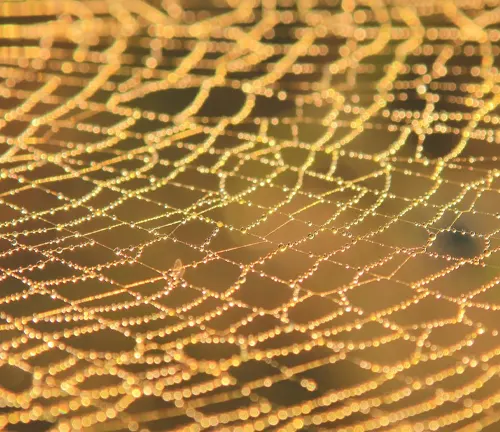

One of the most remarkable abilities of Orb-weavers spiders is their capacity to produce silk and construct elaborate webs for hunting and shelter. Silk production is a complex process that involves specialized organs called spinnerets located at the rear of the spider’s abdomen.
Orb-weavers spiders possess several types of silk glands within their spinnerets, each producing a different type of silk with unique properties. These silks vary in elasticity, strength, and stickiness, allowing spiders to tailor their webs to specific purposes.
The process of web-building begins with the spider extruding silk from its spinnerets, initially producing a framework of non-sticky support lines. Using its legs and body, the spider carefully maneuvers across the framework, adding additional silk strands to create the intricate geometric patterns characteristic of orb webs.
As the web takes shape, the spider strategically places sticky silk threads known as capture spiral lines, which are designed to ensnare unsuspecting prey. These spiral lines are coated with a glue-like substance that adheres to insects upon contact, immobilizing them and preventing escape.
Orb-weavers spiders exhibit remarkable precision and efficiency in web-building, often completing their intricate structures within a matter of hours. Despite their delicate appearance, orb webs are incredibly strong and resilient, capable of withstanding wind, rain, and the struggles of captured prey.
Reproduction and Lifecycle
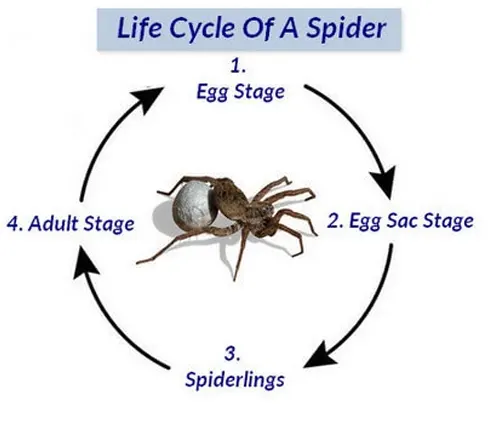
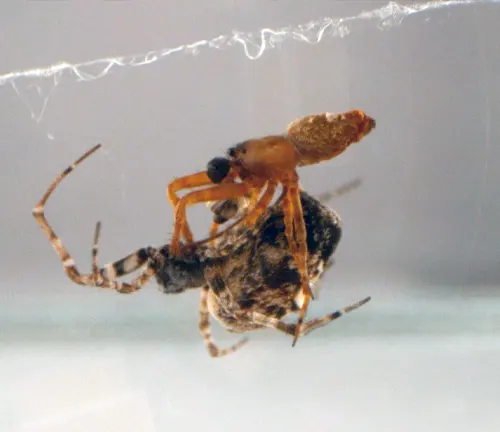
The reproductive cycle of Orb-weavers spiders is a fascinating process that involves intricate behaviors and adaptations to ensure the survival of the species. Like most spiders, Orb-weavers spiders exhibit sexual dimorphism, with distinct differences between males and females in terms of size, morphology, and behavior.
The mating ritual typically begins when a mature male detects the presence of a receptive female, often through pheromone cues or vibrational signals transmitted through her web. The male cautiously approaches the female’s web, being careful to avoid triggering her predatory instincts.
Upon reaching the female, the male may engage in a courtship display, which can involve intricate movements or vibrations to signal his intentions and assess the female’s receptivity. If the female is receptive, mating ensues, with the male carefully depositing his sperm into the female’s reproductive organs using specialized structures called pedipalps.
Following successful mating, the female Orb-weavers spider enters a period of gestation during which she produces eggs. She then constructs a silk egg sac, carefully depositing her fertilized eggs inside and sealing it with additional silk layers for protection.
The duration of the gestation period varies depending on factors such as temperature and species-specific traits. Once the eggs have developed, the female guards the egg sac vigilantly, ensuring its safety from predators and environmental threats.
After hatching, the spiderlings emerge from the egg sac, often in large numbers. Initially, they are small and vulnerable, resembling miniature versions of adult spiders. Spiderlings undergo multiple molts as they grow, gradually increasing in size and developing their distinctive features.
As spiderlings mature, they disperse from the maternal nest, venturing out to establish their own territories and build webs. The lifecycle of Orb-weavers spiders is characterized by a series of molts, during which individuals shed their exoskeletons to accommodate growth and development.
Interesting Facts about Orb-weavers Spiders
- Some Orb-weavers spiders exhibit sexual dimorphism, with females being larger and more brightly colored than males.
- Orb-weavers silk is incredibly strong, with some species’ silk being comparable in strength to steel of the same diameter.
- Some species of Orb-weavers spiders recycle their webs, consuming and rebuilding them regularly.
Different Species
Garden Orb-weaver
(Araneus diadematus)
This species is widespread in temperate regions and is often found in gardens, parks, and wooded areas. Recognizable by its distinctive cross-shaped markings on its abdomen, the Garden Orb-weaver constructs large orb webs to capture prey.

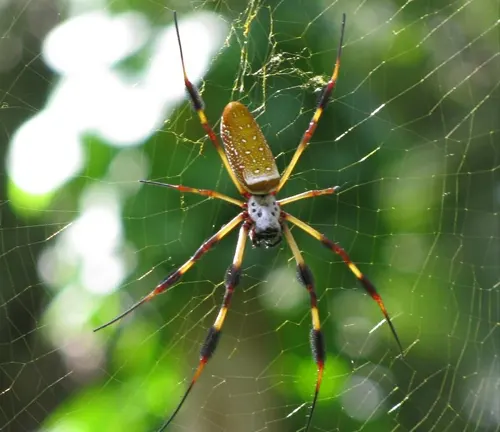
Golden Silk Orb-weaver
(Nephila clavipes)
Found in tropical and subtropical regions worldwide, the Golden Silk Orb-weaver is renowned for its large, golden-colored webs. This species is known for its impressive size, with females reaching several inches in length.
Shamrock Orb-weaver
(Araneus trifolium)
Named for the shamrock-like pattern on its abdomen, this species is native to North America. It inhabits a variety of habitats, including forests, meadows, and gardens, where it builds orb webs to capture insects.
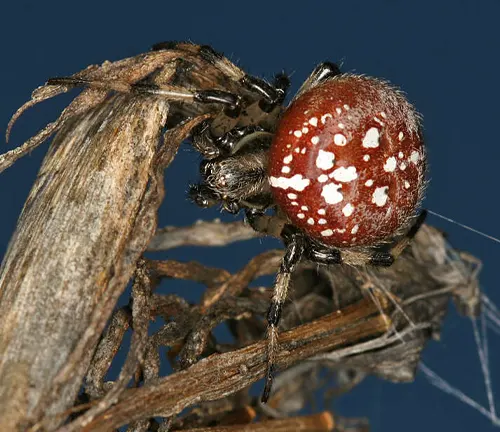
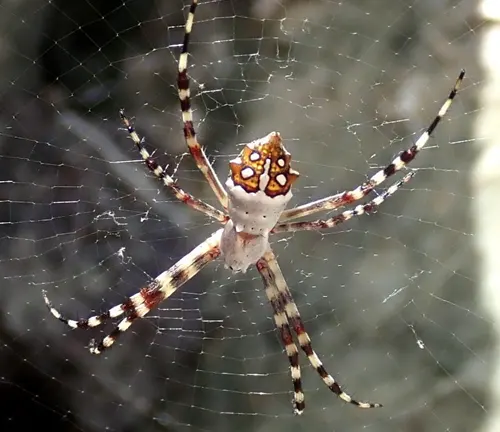
Silver Garden Orb-weaver
(Argiope argentata)
This species is native to the Americas and is known for its striking silver and yellow coloration. The Silver Garden Orb-weaver constructs large orb webs with a distinctive zigzag pattern known as a stabilimentum.
Barn Spider
(Araneus cavaticus)
Commonly found in North America, the Barn Spider is named for its preference for building webs in barns, sheds, and other man-made structures. It is known for its large, circular webs and distinctive brown and yellow coloration.
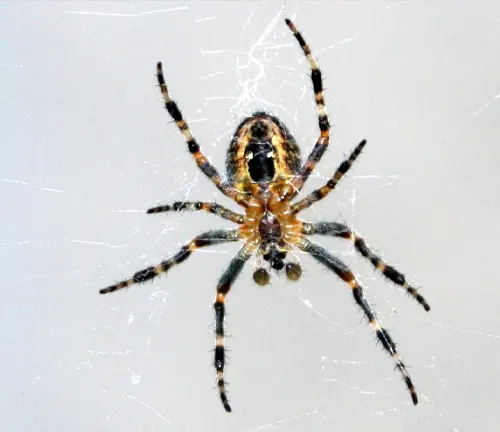
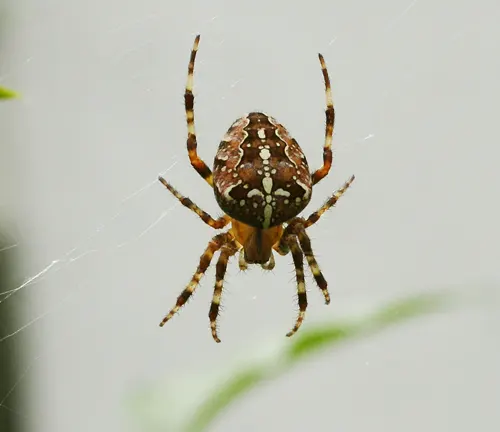
European Garden Spider
(Araneus diadematus)
Similar in appearance to the Garden Orb-weaver, this species is widespread in Europe and has also been introduced to other regions worldwide. It is known for its intricate orb webs and variable coloration.
Cat-faced Spider
(Araneus gemmoides)
Native to North America, the Cat-faced Spider derives its name from the cat-like markings on its abdomen. It inhabits a variety of habitats, including forests and grasslands, where it constructs orb webs to capture prey.
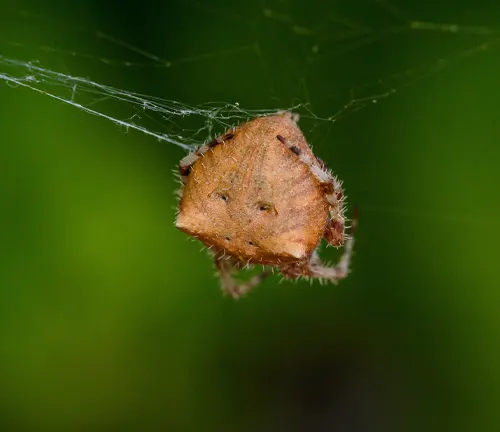
Frequently Asked Questions (FAQs)
- What is an Orb-weaver spider?
An Orb-weaver spider is a type of arachnid belonging to the family Araneidae, known for its ability to spin intricate orb-shaped webs for capturing prey. - How do Orb-weaver spiders catch their prey?
Orb-weaver spiders catch their prey by constructing elaborate orb webs made of sticky silk. When an insect becomes trapped in the web, the spider quickly immobilizes it and delivers a venomous bite to subdue the prey. - Are Orb-weaver spiders venomous to humans?
While Orb-weaver spiders possess venom to subdue their prey, most species are not considered harmful to humans. Their venom is typically not potent enough to cause serious harm, and Orb-weavers spiders are generally non-aggressive unless provoked. - What is the lifespan of an Orb-weaver spider?
The lifespan of an Orb-weaver spider varies depending on factors such as species, environmental conditions, and availability of food. In general, most Orb-weaver spiders live for one to two years, with females typically living longer than males. - How do Orb-weaver spiders build their intricate webs?
Orb-weaver spiders build their intricate webs by extruding silk from specialized spinnerets located at the rear of their abdomens. They carefully construct a framework of non-sticky support lines before adding sticky spiral lines to ensnare prey. - What are the different types of Orb-weaver spiders?
Some common types of Orb-weaver spiders include the Garden Orb-weaver, Golden Silk Orb-weaver, Shamrock Orb-weaver, Silver Garden Orb-weaver, and many more, each with its own unique characteristics and adaptations. - Where are Orb-weaver spiders commonly found?
Orb-weaver spiders are commonly found in various habitats worldwide, including forests, grasslands, gardens, and urban areas. They can be found on every continent except Antarctica. - Do Orb-weaver spiders have any natural predators?
Yes, Orb-weaver spiders have natural predators such as birds, lizards, wasps, and other spiders. These predators may feed on Orb-weaver spiders or their eggs, contributing to natural population control. - Are Orb-weaver spiders beneficial to the environment?
Yes, Orb-weaver spiders are beneficial to the environment as they help control insect populations, contributing to ecological balance. Their presence can reduce the need for chemical pesticides in agriculture and gardening. - How do Orb-weaver spiders reproduce?
Orb-weaver spiders reproduce sexually, with males depositing sperm into the female’s reproductive organs using specialized structures called pedipalps. Females then lay eggs within silk egg sacs, which they guard until hatching. - Can Orb-weaver spiders bite humans?
Orb-weaver spiders can bite humans if they feel threatened or provoked, but their venom is typically not harmful to humans. Bites may result in mild irritation or discomfort, similar to a bee or wasp sting. - What do Orb-weaver spiders eat besides insects?
Orb-weaver spiders primarily feed on insects that become ensnared in their webs. However, they may also consume other small arthropods such as beetles, moths, and flies. - How do Orb-weaver spiders protect themselves from predators?
Orb-weaver spiders protect themselves from predators through camouflage, agility, and web-building behaviors. Some species mimic the appearance of toxic insects, while others may drop from their webs or flee when threatened. - What role do Orb-weaver spiders play in ecosystems?
Orb-weaver spiders play a crucial role in ecosystems as predators of insects, helping regulate insect populations and maintain ecological balance. They contribute to biodiversity and nutrient cycling within their habitats. - Are Orb-weaver spiders attracted to light?
While Orb-weaver spiders are primarily nocturnal and may be attracted to light sources at night, their behavior can vary depending on species and environmental conditions. - How can I safely remove an Orb-weaver spider from my home?
Orb-weaver spiders can be safely removed from homes by gently capturing them in a cup or container and releasing them outside. It’s important to avoid harming the spider and to handle it with care. - What is the difference between male and female Orb-weaver spiders?
Male and female Orb-weaver spiders often exhibit differences in size, coloration, and morphology. Females are typically larger and may have more vibrant coloration, while males may have specialized structures for mating. - Do Orb-weaver spiders migrate?
Orb-weaver spiders do not migrate in the same way as some bird or insect species. However, they may disperse to new areas in search of food, mates, or suitable habitat. - Can Orb-weaver spiders live indoors?
Orb-weaver spiders are primarily outdoor creatures but may accidentally enter homes in search of prey or shelter. While they can survive indoors for a period, they are unlikely to establish long-term populations without suitable outdoor habitat. - Are there any Orb-weaver spiders that are endangered or threatened?
Some Orb-weaver spider species may face threats due to habitat loss, pollution, and climate change. While specific endangered or threatened species may vary by region, conservation efforts are important for protecting these arachnids and their habitats.




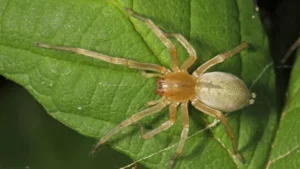
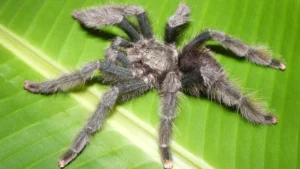



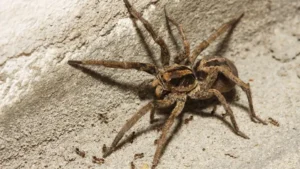


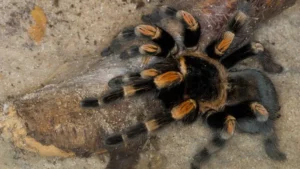
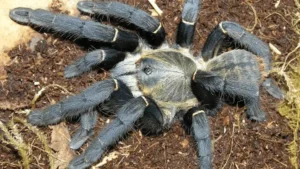
Leave your comment